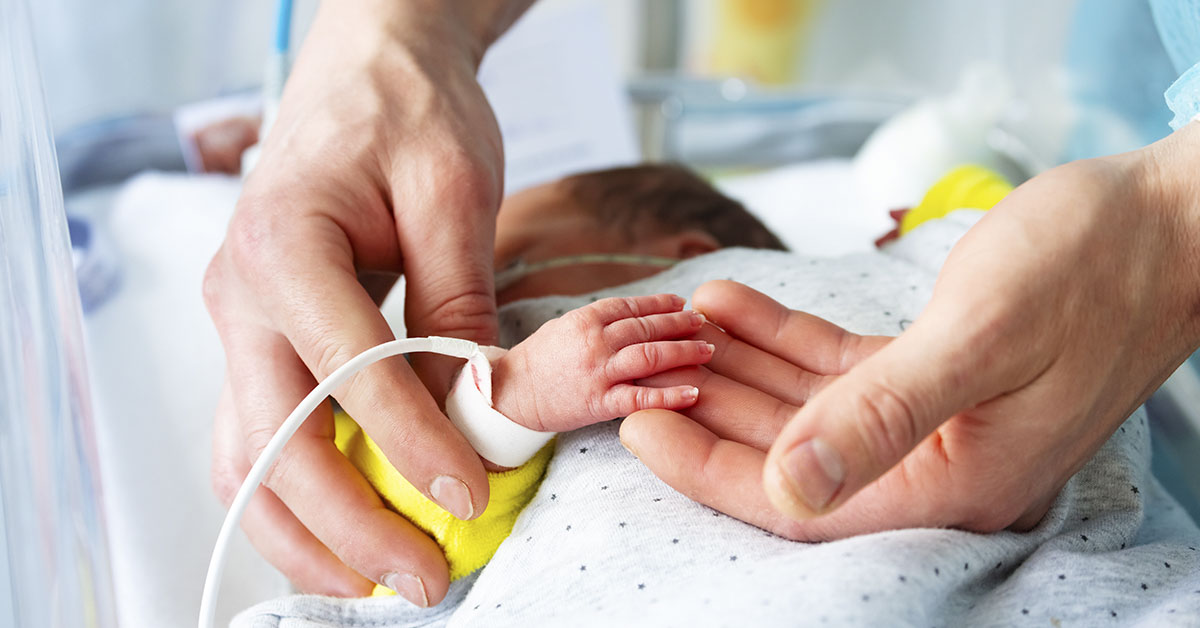On June 15, 2018, Manushi was born in Rajasthan, India. But the premature baby weighed only 14 ounces. She was tiny, and most of her organs were underdeveloped, including her heart, brain, and kidneys. Her doctors didn’t think she would survive. But somehow Manushi defied the odds and became one of the smallest surviving babies in Asia.
“She just fought and fought…”
Manushi was born just 28 weeks into the pregnancy, a far cry from the 39–40 weeks that is usually considered full-term. She couldn’t breathe as she entered the world. Her skin was thin and her feet were as small as a thumbtack. Her mother, Seeta, 48, had to give birth early because of pregnancy complications, and Manushi became her miracle baby. “She’s just fought and fought and fought against all the odds, but she’s made it.”
At an ultrasound at 28 weeks, the doctors realized that the fetus had no blood flow. So they delivered her in an emergency Caesarean section. Immediately afterward, they put her on a ventilator and transferred her to the NICU at the Jivanta Children’s Hospital. They warned Manushi’s parents that it was unlikely she’d live, and if she did, she had only a 0.5% chance of surviving without any kind of brain damage.
Her doctor, Dr. Janged, said, “When the baby was born, we were uncertain of what would happen.” During her first few days, Manushi lost weight, making her survival even more unlikely. “We had to start the baby on total parenteral nutrition, which basically means giving all the essential nutrients, such as amino acids, lipids, carbohydrates, minerals, multivitamins, and trace elements, directly into blood circulation,” said the doctor. But after multiple blood transfusions, nutritional transfusions, and consistent respiratory support, she began to improve. Her condition was stable enough at seven weeks that she was able to start breastfeeding. [1]
The Survival Expectancy of a Premature Baby
Then, at six months of age and weighing 5.2 pounds, Manushi finally went home. Being born at 28 weeks, she was considered very preterm, which experts give a survival expectancy of 80%. However, she was also a micro-preemie, infants born weighing less than 28 ounces or 1.75 pounds at birth. They are at greater risk for health issues and long-term disabilities. Like Manushi, they often require respiratory support, nutrition via intravenous lines, and close monitoring to check their breathing rates, blood pressure, and oxygen levels.
Immediately after birth, health professionals are on the lookout for certain medical issues in micro-preemie babies. These include bleeding in the brain, infections in the digestive system, respiratory distress syndrome, and sepsis. While many of these babies live without any long-term effects, others have lifelong health issues like cerebral palsy, hearing or vision loss, chronic lung disease, and digestive and cognitive problems. [2]
The other premature birth ranges are called “extremely preterm” for infants born before 28 weeks, “very preterm” born for babies between 28 to 32 weeks, “moderate preterm” for babies between 32 to 34 weeks, and “late preterm” for babies 34 to 37 weeks. The medical interventions and potential outcomes for the babies depend on when they were born. In general, the more premature a child is, the higher chance of complications. An extra week in the womb can make make a big difference, but fortunately, medical advances are improving the chances of premature babies’ survival with little to no long-term health concerns. [3]
More Cases of Micro-Preemies
Surprisingly, Manushi isn’t the smallest premature baby to have survived. For instance, in June 2020, Kwek Yu Xuan was born at 24 weeks in Singapore. Like Manushi, she was born via C-section. His mother got preeclampsia, a life-threatening kind of high blood pressure that happens during pregnancy. When she was born, she was only 7.5 ounces, but when she went home after 13 months in the NICU, she weighed 14 pounds. She has chronic respiratory issues but is otherwise healthy.
On September 19, 2004, fraternal twins Rumaisa and Hiba Rahmanwere born at 25 weeks and 6 days. Hiba weighed 1 pound and 4 ounces while Rumaisa was less than half her size at 8.6 ounces. Their mother had to give birth early because of severe preeclampsia. Later on, Rumaise needed laser eye surgery to treat retinopathy of prematurity. As a child, she was small for her age and needed glasses, but she had no other long-term effects. [4]
Sources
- “Premature baby born weighing less than a pound is one of the smallest ever to survive.” Independent. Chelsea Ritschel. January 12, 2018
- “Micro Preemie Survival Rates and Health Concerns.” Very Well Family. Cheryl Bird, RN, BSN. November 7, 2021
- “Premature Baby Survival Rates.” Healthline. Noreen Iftikhar, MD. May 29, 2020
- “World’s Smallest and Youngest Preemies.” Very Well Family. Cheryl Bird, RN, BSN. March 17, 2022

